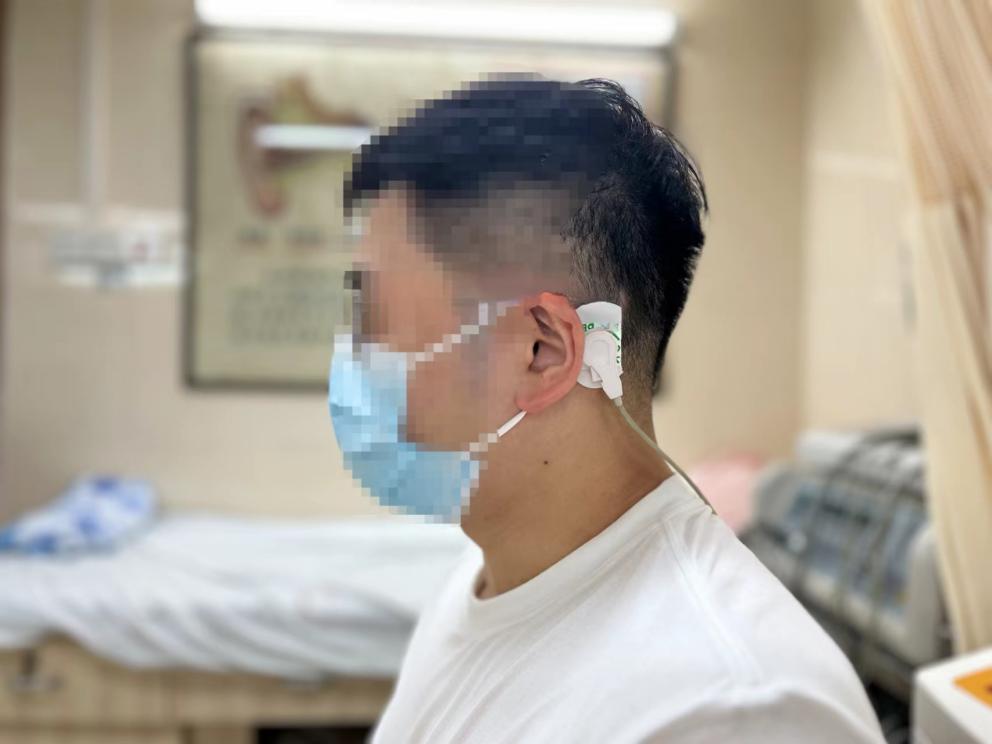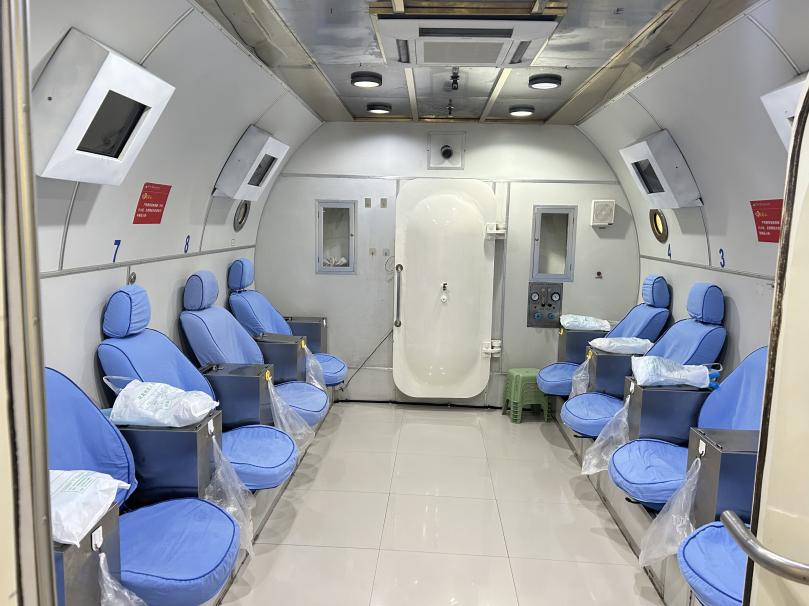Sleep is crucial for the human body to recharge energy and repair damage. However, many people suffer from sleep problems, such as difficulty falling and staying asleep. A therapy combining electroencephalograph bionic electrical stimulation and hyperbaric oxygen may solve the problem.
Wu Shaoling, deputy director of the Department of Rehabilitation Medicine at the Sun Yat-sen Memorial Hospital, explained that the therapy can help the patient’s brain find the right pace and improve its oxygen utilization rate, thus significantly improving sleep disorders.
Trouble falling asleep, shallow sleep, waking up too early, and other sleep problems may cause daytime drowsiness, affecting daily life. Long-term sleep disorders may even lead to mental health problems such as depression and anxiety.
What is electroencephalograph bionic electrical stimulation?

Electroencephalograph bionic electrical stimulation therapy. (Photo provided to GDToday)
The therapy gives mild bioelectricity to a specific area in the brain— the fastigial nucleus, a center regulating the sleep-wake cycle—by placing electrodes on the scalp. With the brain’s sleep pattern adjusted, people fall asleep easier, reduce mid-sleep awakenings, and get more deep sleep.
What is hyperbaric oxygen therapy (HBOT)?

Hyperbaric oxygen therapy. (Photo provided to GDToday)
It immerses people in pure oxygen inside a hyperbaric chamber. With increased pressure, the amount of dissolved oxygen in a human body can be 13 to 17 times higher than that under normal pressure, which makes it possible to solve the oxygen deficit issue.
In recent years, scientists have found that hyperbaric oxygen therapy can also improve sleep quality. It helps the blood carry more oxygen through the patient’s body so that the brain cells can obtain sufficient oxygen supply to promote neuronal activity, balance the nervous system, and reduce anxiety, creating favorable conditions for deep sleep. In addition, HBOT can also adjust the biological clock in the human body and help build a better sleep cycle.
When combined, the two therapies mentioned above will significantly enhance sleep quality.
According to Wu, the therapy can be applied to those who have the following sleep problems:
Insomnia. It is characterized by difficulty falling or staying asleep or unwanted early morning waking, which may be caused by anxiety, stress, depression, or changes in lifestyle.
Obstructive sleep apnoea syndrome. It is a common sleep disorder marked by frequent pauses in breathing during sleep, affecting sleep quality.
Restless Legs Syndrome. It features an unpleasant “creeping” sensation and an irresistible urge to move legs, causing difficulty initiating sleep.
Building healthy habits is the key to improving sleep
Wu said that therapy is a way to acquire sound sleep at night, but the key lies in forming good sleep habits. Here are some tips for a night of good sleep:
Keep a consistent sleep schedule. Try to go to bed and get up at a specific time every day.
Create a quiet and comfortable environment for sleep. That means limiting exposure to bright light, noise, and electronic devices.
Before going to sleep, try taking deep breaths, meditation, and reading to calm your mind.
Seek professional help when sleep problems seriously affect your daily life.
Notes
The therapies above should be conducted under the instruction of a specialist physician.
Author | Teria Wang (intern), Hannah
Editor | Olivia, Nan, Jasmine, Jerry
















